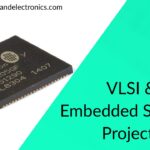Different Types of Serial Communication Protocols, Serial Protocols
Hello guys, welcome back to my blog. In this article, I will discuss the different types of serial communication protocols, serial protocols for communication used in electronic devices, etc.
If you have any doubts related to electrical, electronics, and computer science, then ask questions. You can also catch me on Instagram – Chetan Shidling.
Also, read:
- Types Of Sensors Used In Mobile Phones, Sensors Used In Android Phones.
- Applications Of IoT, Internet Of Things, What Is IoT, Latest Technology.
- What Is A Heat Sink, Working, Why Heat Sink Is Used, Alternatives.
Different Types of Serial Communication Protocols
The various forms of Serial Communication Protocols will be described in this article. Serial communication is the most common method of exchanging data between data processing peripherals. Serial communication is used by every electronic device, whether it be a personal computer (PC) or a mobile phone.
Similar to parallel communication, the protocol is a secure and reliable mode of communication with a set of rules addressed by the source host (sender) and destination host (receiver).
Synchronous Serial Protocols
SPI, I2C, CAN, and LIN is examples of synchronous serial protocols that are employed in various applications since they are one of the greatest resources for onboard peripherals. These are also the protocols that are commonly utilized in significant applications.
SPI Protocol:
The Serial Peripheral Interface (SPI) is a synchronous interface that connects several SPI microcontrollers. Separate wires are required for the data and clock lines in SPI. In addition, the clock is not included in the data stream and must be provided separately. The SPI can be set to work as a master or as a slave.
Data communication is made up of the four basic SPI signals (MISO, MOSI, SCK, and SS), as well as Vcc and Ground. To send and receive data from the slave or master, requires six wires. The SPI can theoretically have an infinite number of slaves. SPI registers are used to configure data communication. The SPI is perfect for high-speed data connection because it can deliver up to 10Mbps.
I2C Serial Communication:
SDA (Serial Data Line) and SCL (Serial Control Line) are two lines used in inter-integrated circuit (I2C) communication between different ICs or modules (Serial Clock Line). A pull-up resistor must be used to connect both lines to a positive source. I2C can deliver up to 400Kbps and uses a 10 bit or 7-bit addressing method to target a specific device on the i2c bus, allowing up to 1024 devices to be connected.
It is appropriate for onboard communication because it has a limited communication length. I2C networks are simple to set up since they only require two wires and new devices can be simply attached to the two I2C bus lines.
USB:
USB (Universal Serial Bus) is a popular protocol that comes in a variety of forms and speeds. A single USB host controller can support a maximum of 127 peripherals. The USB interface is a “plug and plays” device. USB is found in practically every device, including keyboards, printers, media players, cameras, scanners, and mice.
It’s made for quick setup, high data rates, minimal cabling, and hot-swapping. Its predecessors, the bulkier and slower serial and parallel ports, have been phased out. To eliminate interference and allow high-speed transmission over long distances, USB uses differential signaling.
CAN:
In the automotive industry, for example, the Controller Area Network (CAN) is utilized to provide communication between ECUs (Engine Control Units) and sensors. The CAN protocol is reliable, low-cost, and message-based, and it is used in a wide range of applications, including automobiles, trucks, tractors, and industrial robots.
The CAN bus system connects all ECUs and enables central error diagnostics and setup. IDs are used to prioritize CAN messages, ensuring that the highest priority IDs are not interrupted. Each ECU has a chip that receives all incoming signals, determines significance, and acts accordingly – this allows for easy modification and the addition of new nodes (e.g. CAN bus data loggers).
Vehicle start/stop and collision avoidance systems are among the applications. CAN bus systems have a maximum speed of 1Mbps?
Microwire:
MICROWIRE is a serial 3-wire interface that runs at 3Mbps [full-duplex] and is essentially a subset of the SPI interface. Because the Microwire bus is a serial I/O port on microcontrollers, it can also be found on EEPROMs and other peripheral chips. SI (Serial Input), SO (Serial Output), and SK (Serial Key) are the three lines (Serial Clock). The microcontroller’s Serial Input (SI) line, the Serial Output (SO) line, and the Serial Clock (SK) line.
On the lowering edge of SK, data is pushed out, and on the rising edge, it is valued. On the rising edge of SK, SI is shifted in. MICROWIRE/Plus is an additional bus upgrade to MICROWIRE. The primary difference between the two buses appears to be that the MICROWIRE/Plus design is more complicated within the microcontroller. It has a maximum download speed of 3Mbps.
Asynchronous Communication Protocols
Here are a few of the most frequent asynchronous communication interfaces you’ll come across. They’re all instances of serial protocols that employ asynchronous data transfer to allow devices or applications to communicate with one another.
RS232 Protocol:
The first serial protocol, RS232, was created to link modems to teletype machines. The EIA first proposed the RS, which stands for Recommended Standard (Electronic Industries Alliance). The TIA is currently the body in charge of defining standards ( Telecommunication Industry Association).
RS422 Interface:
When it comes to serial communication, the RS422 standard provides more flexibility. With this must-drop serial interface, you may connect up to 10 transmitters and ten receivers to a single bus. Data is transferred across two twisted-pair wires in a differential arrangement. With a maximum connection length of 4000 feet, RS422 offers baud rates up to 10Mbps.
RS485 Interface:
In industrial applications, the RS485 protocol is the recommended serial protocol. You may create a differential configuration with up to 32 line drivers and 32 receivers using this protocol. The line driver is the only transmitter that can be operational at any one moment.
To summarise, one of the most commonly used communication interface technologies in electronics and embedded systems is serial communication. Various applications may require different data speeds. When working with this type of application, Serial Communication Protocols might be crucial. As a result, selecting the proper Serial protocol is critical.
This was about the different types of serial communication protocols. I hope this article ” Different Types of Serial Communication Protocols ” may help you all a lot. Thank you for reading.
Also, read:
- 100 + Electrical Engineering Projects For Students, Engineers
- 1000+ Electronics Projects For Engineers, Diploma, MTech Students
- 1000+ MATLAB Simulink Projects For MTech, Engineering Students
- 500+ Embedded System Projects For Engineer, Diploma, MTech, PhD
- 500+ Projects For Diploma Electrical, Electronics Student, Diploma Project
- 8051 Microcontroller Timers, TCON Register, TMOD Register
- Advancements In 3D Printing Technology And It’s Future
- Advancements In Power Electronics For Energy Efficiency
Author Profile
- Content Writer
Latest entries
 All PostsAugust 25, 2021Top 16 Highest Paying Engineering Jobs in the USA For Freshers
All PostsAugust 25, 2021Top 16 Highest Paying Engineering Jobs in the USA For Freshers All PostsAugust 23, 2021Top 10 Smart Cities In The World, Best Cities To Visit In The World
All PostsAugust 23, 2021Top 10 Smart Cities In The World, Best Cities To Visit In The World All PostsAugust 21, 2021Top 20 VLSI & Embedded Systems Projects for Mtech Students
All PostsAugust 21, 2021Top 20 VLSI & Embedded Systems Projects for Mtech Students All PostsAugust 21, 2021Top 20 Power Systems Projects For MTech Students, Engineering Students
All PostsAugust 21, 2021Top 20 Power Systems Projects For MTech Students, Engineering Students








